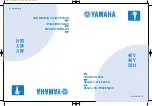
Advantech SOM-ETX Design Guide
5.14.3 Battery
2
1
3
BR/CR2032
1
2
BATT
1-2 CLEAR CMOS
2-3 NORMAL
1K
75
220u/16V
1
1
2
2
3
3
1K
220u/16V
ZD3.9V
1
2
NPN
1
2
3
Carryboard
SOM-ETX
VCCSB
VCC
Figure 5-43 Battery Connections
The internal real-time clock in the SOM-ETX module requires a constant source of
power for timekeeping. On some SOM-ETX modules, the battery input also is
required to retain setup parameters in the CMOS memory. A 3V Lithium cell is
usually used for the RTC battery. The positive terminal is connected to the BATT pin
of the SOM-ETX module, and the negative terminal is connected to ground. The
battery is typically a coin cell type such as a CR2032, but this may not be suitable for
all applications. Some applications may require an RTC battery with greater capacity
than small coin cells can provide. The required battery capacity varies among SOM-
ETX modules and operating conditions. In particular, sustained high operating
temperatures will increase both the battery current requirements of the SOM-ETX
module and the battery internal self-discharge rate. The combination of these factors
may result in a required battery capacity substantially greater than that typical for a
benign office environment.
5.14.4 I2C Bus
Figure 5-44 I2C Bus Connections
Most SOM-ETX modules provide a software-driven I2C port for communication with
external I2C slave devices. This port is implemented on SOM-ETX Pins I2DAT and
I2CLK. The implementation details and software interface for this port are different
between SOM-ETX modules. Refer to the individual SOM-ETX users’ guide for
details.
I2C
1
2
3
4
SOM-ETX
Carryboard
I2CDAT
I2CCLK
110
Chapter 5 Carrier Board Design Guidelines
















































